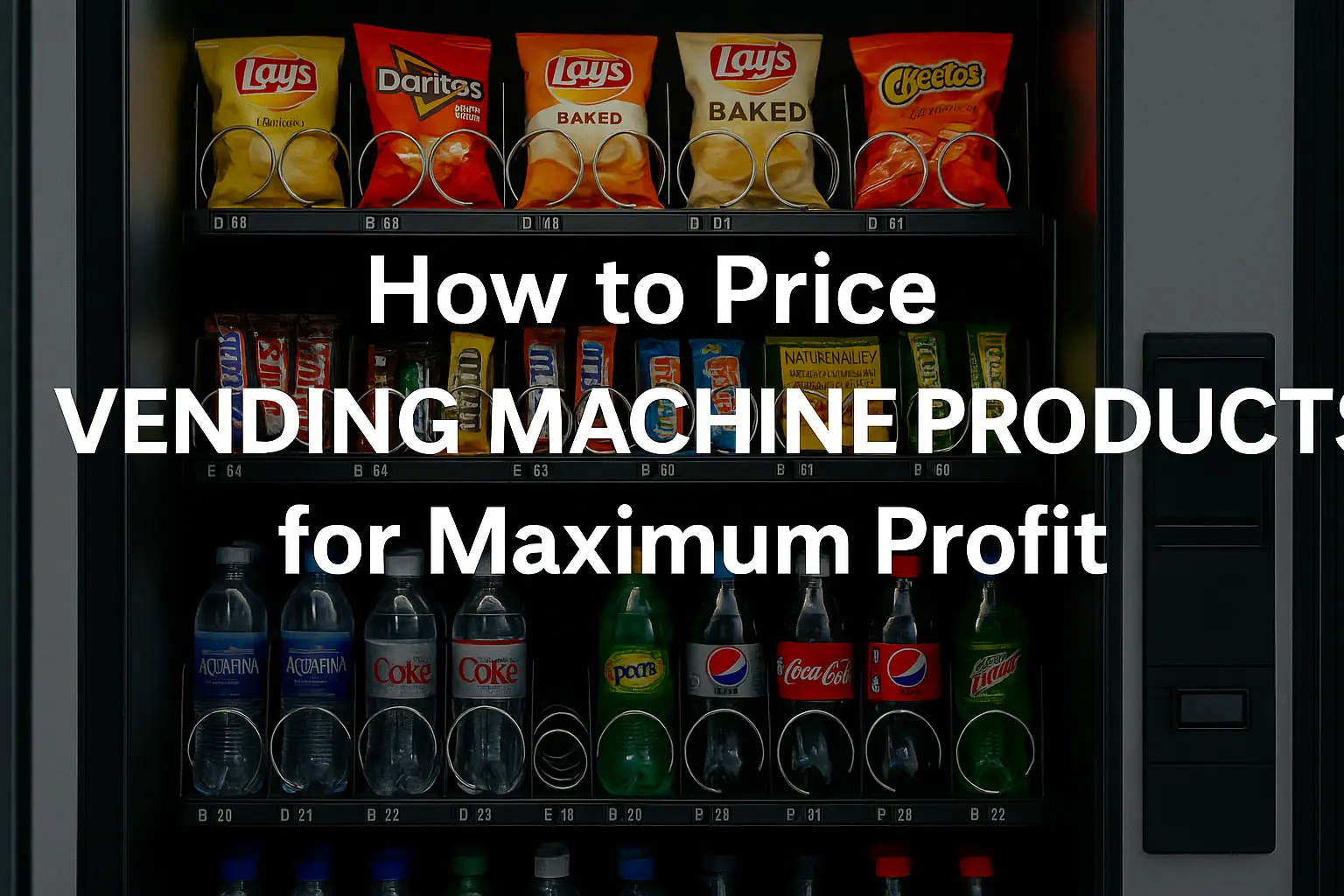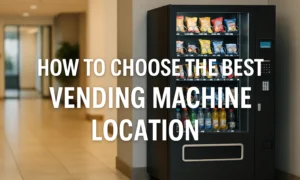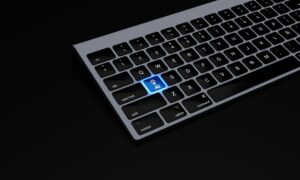The success of your vending machine business depends on one thing most people overlook — pricing. You could have a perfect location, modern equipment, and the most popular products, but if the prices aren’t right, profits vanish quickly. Set them too low and you’ll struggle to cover costs; set them too high and customers will simply walk away.
Pricing for vending machines is more than math — it’s about understanding psychology, convenience, and market behavior. In this comprehensive guide, we’ll explore how to choose profitable price points, analyze costs, and adapt to changing demand so every item you stock contributes to long-term growth.
Why Smart Pricing Shapes Your Vending Business
Pricing isn’t just about making money — it’s about shaping perception. Each product in your machine silently communicates value through its price tag. A fair, rounded number builds trust and signals reliability, while awkward or extreme pricing can drive customers away.
In the U.S. vending market, even small pricing shifts can have a huge impact. According to industry insights from 2024, a $0.25 increase per item across an average vending route can raise annual revenue by over 12–15% without major changes in volume. The reason is simple: vending is a micro-margin business. Every cent counts, especially when you multiply it across hundreds of daily transactions.
When done right, pricing not only increases your profits but also enhances customer loyalty. People will keep returning if your prices feel consistent, transparent, and convenient for their needs.
Steps to Set Price Vending Machine Products for Bigger Profits
Step 1: Know Your True Cost Before You Set a Price
Before you start printing price labels, you need to know what each product truly costs you — not just its wholesale price. Many new operators make the mistake of ignoring small but critical expenses.
Your true cost per item includes:
- Wholesale product price from distributors
- Shipping and delivery fees
- Product shrinkage or spoilage over time
- Machine depreciation and repair costs
- Electricity and maintenance
- Restocking labor, fuel, and travel time
- Revenue share or rent paid to location owners
Once all of these are calculated, you’ll find your “all-in cost.” Only after that can you set a realistic selling price.
As a baseline, most U.S. operators aim for at least a 50–60% gross margin. So, if a snack costs you $1 to purchase and operate, a selling price between $1.75 and $2.00 is a safe starting point. This markup helps offset machine wear, commission fees, and inflation without scaring away buyers.
Step 2: Understand Your Audience and Location Value
Not every vending location serves the same type of customer. A bottle of water that sells for $1.25 in an office building could easily fetch $2.50 in an airport. The difference isn’t greed — it’s convenience pricing.
Think about what your audience values most. Office workers might prefer healthy snacks and fast service, while travelers at an airport or hospital are willing to pay more for accessibility. Gym visitors often lean toward protein bars and low-sugar drinks, but price sensitivity is higher.
Before deciding prices, spend time comparing what similar items cost in surrounding stores, cafeterias, or nearby machines. Pay attention to traffic type (students, professionals, late-night workers) and adjust your margins based on their spending habits.
The more precisely you understand your market, the more confidently you can price — and still appear “fair.”
Step 3: Choosing the Right Pricing Strategy
Every successful vending operator develops a personal pricing philosophy. Here are five strategies that blend flexibility with profitability:
1. Cost-Plus Pricing
This is the simplest method — calculate your all-in cost and add a consistent markup, often 40–60%. It’s predictable, easy to apply, and ensures you don’t sell at a loss.
2. Value-Based Pricing
Instead of focusing solely on cost, look at perceived value. If your vending machine is in a high-traffic hospital or university, customers often pay more for convenience. Price based on what the market can bear rather than a fixed formula.
3. Tiered or Premium Pricing
Offer both regular and premium products. For example, stock standard chips at $1.75 and organic options or energy drinks at $3.00. The premium choices boost your average profit per transaction.
4. Dynamic or Time-Based Pricing
With modern smart vending machines, you can adjust prices based on time or demand. Raise them slightly during peak hours or lower them in the evenings to clear out slow-moving stock.
5. Bundle or Combo Pricing
Encourage multi-item purchases through deals like “Buy 2, Save 10%.” This increases total revenue per visit without cutting margins dramatically.
Successful vending routes often mix two or three of these methods to balance volume and profitability across different machine types.
Step 4: Test, Track, and Fine-Tune Over Time
Your first price point is only a starting line. The best operators continuously monitor sales data to find the sweet spot between volume and margin.
Start by testing small price variations — increase or decrease by 10 to 15 cents and watch the results. Track weekly revenue, sell-through rates, and restock frequency. If certain products always sell out quickly, they can bear a slightly higher price. If others linger, reduce prices or swap them for better-performing items.
Modern vending software helps analyze every sale in real time. Use that data to identify patterns — what time people buy most, which combinations sell together, and how price changes affect behavior. Within a few months, you’ll have a precise pricing map tailored to your exact location.
Step 5: Balancing Sales Volume and Profit Margin
Finding balance is the hardest part of vending machine pricing. Lower prices can attract more buyers but reduce per-item profit, while higher prices may improve margins but shrink overall sales. The goal is to find the price that maximizes total profit, not just margin per unit.
A useful mindset: treat each machine like a small retail experiment. You’re looking for the “profit intersection” — where steady demand meets healthy markups. As a rule, if a product sells slowly even after testing, it might not be the right fit for that location. Replacing it can be more effective than endless repricing.
Keep in mind that customer perception changes over time. A price that once seemed fair may need adjusting due to inflation, competition, or new product introductions.
Step 6: Smart Pricing for Perishables and Seasonal Goods
Perishable goods like sandwiches, salads, or baked snacks need special attention. Their shelf life directly affects pricing flexibility. You can start at a higher price on day one and discount toward the end of the shelf period to minimize waste.
Try offering small promotions such as “Fresh Today” or “Last Chance Sale.” It gives customers the feeling of getting value while helping you reduce spoilage costs.
During different seasons, pricing should also shift. Cold beverages, smoothies, and ice creams can be priced higher in summer, while coffee or soup cups can see slight increases in colder months. Adapting your prices seasonally keeps your products relevant and your sales curve consistent.
Step 7: The Power of Premium Products
Modern vending isn’t just about chips and soda. Consumers are willing to pay extra for healthier or trendier items — think plant-based snacks, sparkling water, or organic chocolate. Introducing a few premium products helps balance out lower-margin basics.
These items also elevate your machine’s perceived quality. Even if only 20% of your customers buy premium options, they can contribute disproportionately to profits. Always test new categories and monitor how customers respond.
Remember, variety plus value equals loyalty. A customer who finds both affordable and upscale options in your machine will likely return again and again.
Step 8: Real-World Example
Let’s put this into perspective. Say your total cost for a can of soda is $0.80. You start by pricing it at $1.50 and sell 20 units a day. That’s $30 revenue and $14 profit. Now, you raise the price to $1.75. You sell 17 units — $29.75 revenue but $16.15 profit. Even with fewer sales, your total profit increases.
That’s the magic of optimization — small adjustments, big outcomes. Multiply that across 10 machines, and you’re easily earning hundreds more per week.
Conclusion
Pricing is not about chasing the highest number — it’s about building a sustainable system that balances cost, value, and customer satisfaction. With clear data, smart testing, and consistent monitoring, you can turn every vending machine into a profitable micro-business.
In 2025 and beyond, success will belong to operators who use strategy, not luck. Focus on data-driven decisions, customer psychology, and adaptive pricing. With every cent fine-tuned, your vending business can transform from modest to remarkable.






























































